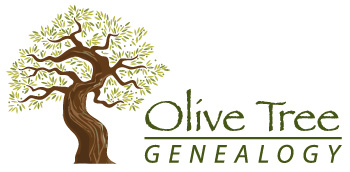Olive Tree Genealogy is pleased to present a three part series on Cleaning your computer by guest author Barbara Brown. This is something all genealogists need to do, including me!
Play nice with your computer © copyright Barbara A. Browm 2009.
I know you have access to a computer, because you are reading this. And I know that you occasionally snack whilst at the computer, because you are human. And therefore, I know that the inside of your computer is a mess. Pet hair, bug dander, crumbs, loose mattress stuffing, lint, dust, flakes, and other unspecified particles have taken up residence within your computer. Messy computers become overheated computers which become short-lived computers.
Computers are expensive. Cleaning them is not. Computers should be cleaned at least twice a year for Compulsively Neat People and every other month for Average Discriminating Folks. And if your computer's fan is whining, whirring, snuffling or creaking loudly, it is definitely time for PC Grooming.
Go to the store, and get a couple of cans of compressed air. You will need more than one can. Compressed air is sold in office supply stores, computer and department stores, club or discount stores. Buy a new mouse pad. If you are in the mood, also purchase special-purpose cleaners ( foam swabs, a screen cleaner cloth, floppy drive or cd/dvd-drive cleaning kit, cleaning kits for the mouse, printer, scanner, what-have-you).) Set aside an hour for this.

Gather up your compressed air, a duster, a large paper bag for discards, newspaper, a soft lint-free cloth, a slender screwdriver, the portable battery-operated vacuum ( rated 'ESD-safe' ), q-tips and rubbing alcohol or antibacterial wipes, your new computer cleaning kits, pencil and paper. You might want a dust mask, and you might want to move to the back porch for this process. Arrange a Play Date for your children, spouses, in-laws and pets or sequester them in another location. Bribe them with a toothsome snack. Otherwise they will want to help and they will want to explore the inner workings of the computer. Such curiosity is cute but antithetical to Proper PC Hygiene.
Step One First, before you turn off the computer, make backup copies of anything you hold dear. Tidying the computer innards should not affect any of your data, but Murphy's Law reigns. And you needed to back up anyway. OK. Turn off the computer. Completely off. Turn off the surge protector too. Remove the surge protector plug from the wall outlet. Remove the plug from the computer. (What? You don't have a surge protector??? Go back to the store and get one before you go any further).
Step TwoRemove the assembled pens, pencils, forks, spoons, papers, gum wrappers, paper clips, Milk-Bones, credit cards, junk mail catalogues, take-out containers, and that long-lost spare key. Put this stuff someplace far away from the computer for later sorting and disposal. Carefully vacuum
around the computer; the desk, the wall behind, the floor nearby. Dust the outside of the computer with your duster paying particular attention to the air vents.
Now using the brush attachment, carefully vacuum the outside of the computer but not the back connection panel. Lift the computer carefully, move to a nearby clean spot, and vacuum the spot where the computer was. Vacuum the outside of the computer fans (behind a grille) by carefully inserting the screwdriver just far enough into the grate to prevent the fan from turning, and then hold the vacuum brush away from the grate..
Coming Next: Play nice with your computer. Part Two: Steps 3, 4, 5
---------------------------
This article may not be reproduced or transmitted in any form or by any means, electronic or mechanical, including photocopying, recording, or by any information storage and retrieval system, email, messaging system, or mailing lists, without the written permission of the author.




